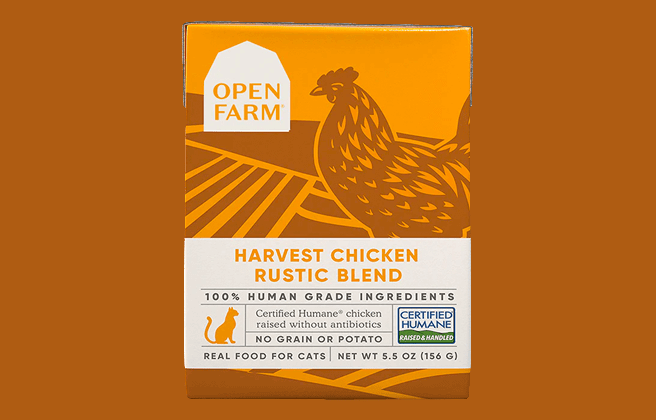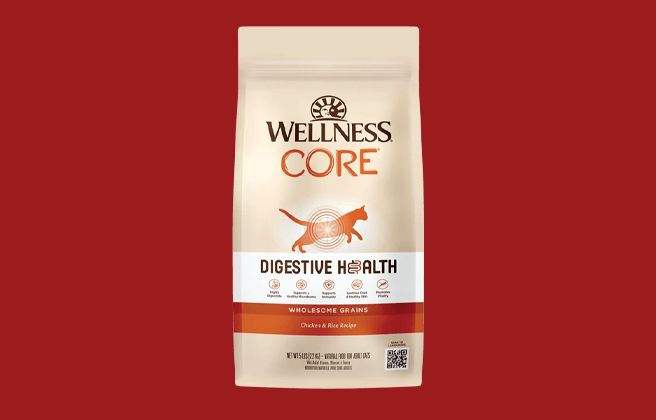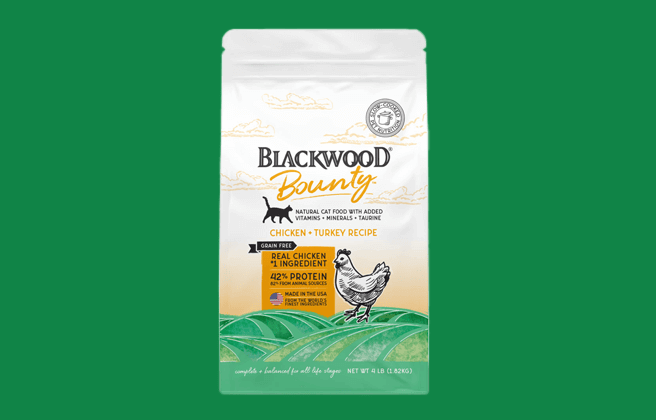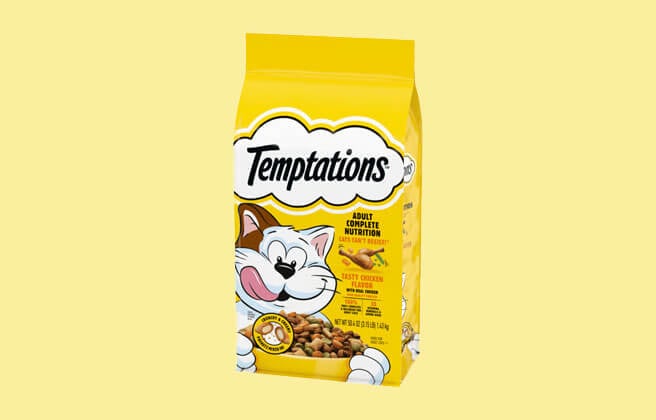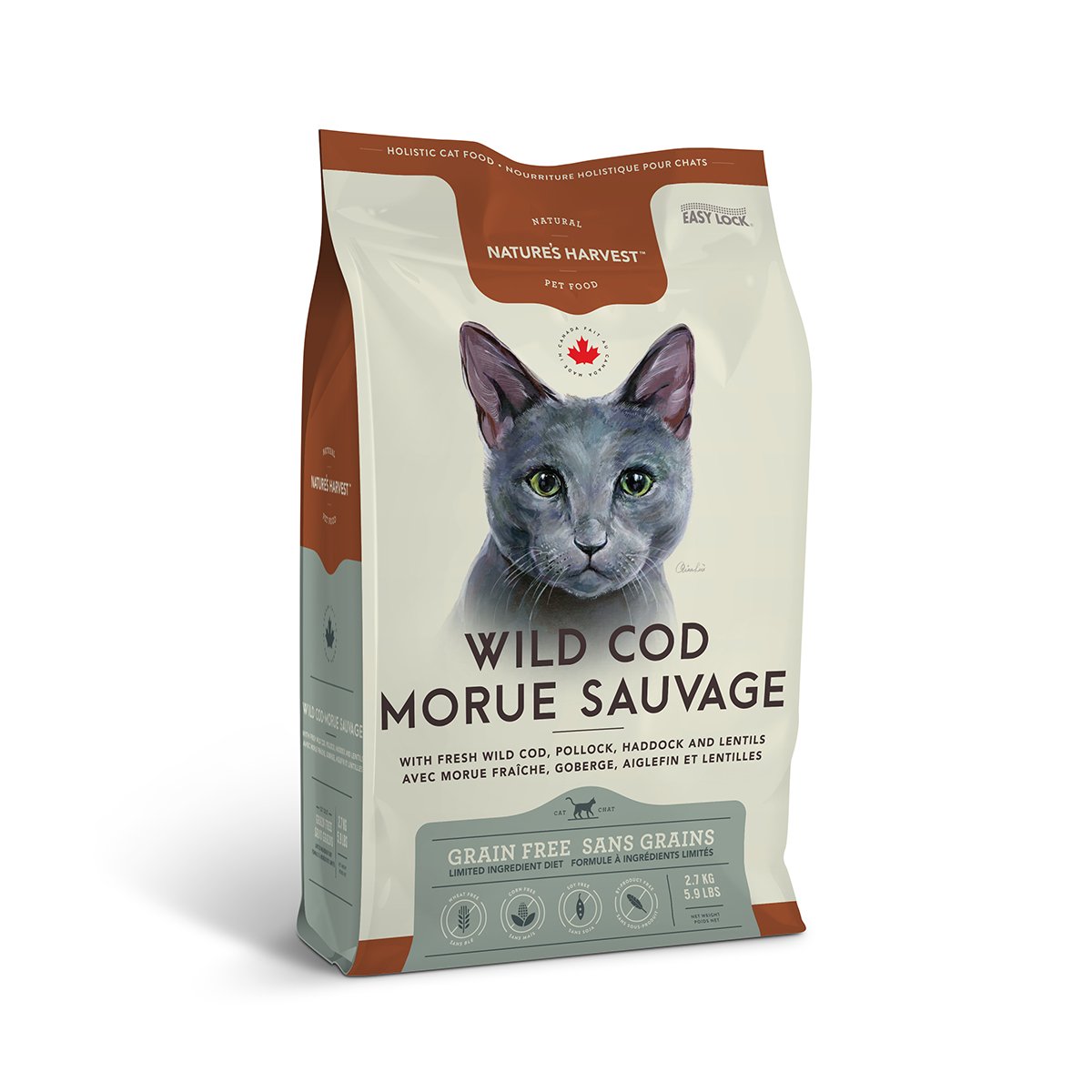
Our Verdict
Nature’s Harvest dry product range is made up of four recipes with ratings which vary from 4 to 4.5 stars. The average rating of the overall range is 4 stars.
This dry food is made in Canada and is free from artificial preservatives, flavors and colors. It includes recipes for adults, kittens and senior cats and there is a grain-free option too.
None of the formulas contain wheat, corn or soy and there are no meat by-products.
Pros
- No artificial preservatives
- Named meat and fish sources
- No corn, wheat or soy
Cons
- Higher than average carbohydrate content
The table below shows each recipe in the range including our rating and the AAFCO nutrient profile: Growth (kitten), Maintenance (adult), All Life Stages, Supplemental or Unspecified.
| Product line | Rating | AAFCO |
|---|---|---|
| Nature's Harvest Adult/Kitten Chicken | 4 | A |
| Nature's Harvest Grain-Free Chicken Recipe | 4.5 | A |
| Nature's Harvest Mature Chicken Recipe | 4 | M |
| Nature's Harvest Wild Cod Recipe | 4.5 | A |
Recipe and Label Analysis
Nature’s Harvest Wild Cod Recipe was selected to represent the other products in the line for a detailed recipe and nutrient analysis.
Label and nutrient data below are calculated using dry matter basis.
Ingredients Analysis
The first ingredient is fresh white fish (cod, pollock and haddock). These are a marine species of fish native to both the Atlantic and Pacific coasts of North America. Although a quality item, raw fish contains up to 73% water. After cooking, most of that moisture is lost, reducing the meat content to just a fraction of its original weight.
The second ingredient is menhaden fish meal. Because it is considered a meat concentrate, fish meal contains almost 300% more protein than fresh fish itself.
Menhaden are small ocean fish related to herring. They’re rich in protein and omega-3 fatty acids. What’s more, in their mid-depth habitat, menhaden are not exposed to mercury contamination as can be typical with deep water species. This item is typically obtained from the “clean, dried, ground tissue of undecomposed whole fish and fish cuttings” of commercial fish operations. [1. Association of American Feed Control Officials]
The third ingredient is peas. Peas are a quality source of carbohydrates. And like all legumes, they’re rich in natural fiber.
However, peas contain about 25% protein, a factor that must be considered when judging the meat content of this cat food.
The fourth ingredient is vegetable oil, a generic oil of unknown origin. The ratio of omega-6 to omega-3 fats in any oil is nutritionally critical and can vary significantly (depending on the source). Without knowing more, it’s impossible to judge the quality of an item so vaguely described. However, compared to a named animal fat, a generic vegetable oil cannot be considered a quality ingredient.
The fifth ingredient is lentils. Lentils are a quality source of carbohydrates. Plus (like all legumes) they’re rich in natural fiber.
However, lentils contain about 25% protein, a factor that must be considered when judging the actual meat content of this cat food
The sixth ingredient is salmon meal. Just like menhaden fish meal, salmon meal contains almost 300% more protein than fresh fish itself.
The seventh ingredient is potato protein, the dry residue remaining after removing the starchy part of a potato. Even though it contains more than 80% protein, this ingredient would be expected to have a lower biological value than meat. Less costly plant-based products like this can notably boost the total protein reported on the label — a factor that must be considered when judging the actual meat content of this cat food.
The eighth ingredient is whole flaxseed, one of the best plant-based sources of healthy omega-3 fatty acids. Flax meal is particularly rich in soluble fiber. However, flaxseed contains about 19% protein, a factor that must be considered when judging the actual meat content of this cat food.
From here the list goes on to include a number of other items. But to be realistic, ingredients located this far down the list (other than nutritional supplements) are not likely to affect the overall rating of the product.
However there are two notable exceptions:
This recipe does include dried fermentation products. These are typically added as probiotics to aid with digestion.
It also includes taurine. Taurine is an essential amino acid for cats associated with the healthy function of heart muscle and eye sight, and is crucial for maintaining good health in cats. We, therefore, view its presence in this recipe as a positive addition.
Nutrient Analysis
Based on its ingredients alone, Nature’s Harvest Wild Cod Recipe looks like an above-average dry product.
The dashboard displays a dry matter protein reading of 40%, a fat level of 22.2% and an estimated carbohydrate level of 29.8%.
As a group, the brand features an average protein content of 36.7% and a mean fat level of 19.7%. Together these figures suggest a carbohydrate content of 35.6% for the overall product line, alongside a fat to protein ratio of 53%.
This means Nature Harvest dry cat food contains average protein and carbohydrate content and above average fat when compared to typical dry cat food.
Final Word
Nature’s Harvest dry cat food formulas include a multitude of botanical ingredients that offer a range of health benefits for cats.
Formulated to support dental skin and coat care, as well as gastrointestinal and metabolic systems, these recipes can also help with hairball control, digestion and weight maintenance.
Has Nature's Harvest cat food been recalled in the past?
No, Nature’s Harvest has never had any cat food recalls.
You can view a complete list of all cat food recalls since 2021 here.
To stay on top of any cat food product recalls, sign up for our free email alerts, here.
About
Nature’s Harvest was founded in Quebec, Canada, in 2004. Its aim was to create a wholesome diet for cats and dogs, sourcing as many ingredients as possible from Canada.
It has made a commitment to support local businesses and farmers and ensures the Canadian facilities it works with adhere to the strictest pet food regulations.
Nature’s Harvest products can be found in global pet food stores nationwide.
Sources
Best cat foods
We uphold the highest editorial standards when creating the authoritative content pet parents rely on and trust.
Every piece of clinical content on the Cat Food Advisor is reviewed by our certified Veterinary Advisory Board, which consists of licensed veterinarians and medically certified specialists.
Our reviews are completely independent; we are not paid by any pet food company to promote their products favorably. We do not accept money, gifts, samples or other incentives in exchange for special consideration. For more information see our Disclaimer & Disclosure page.






